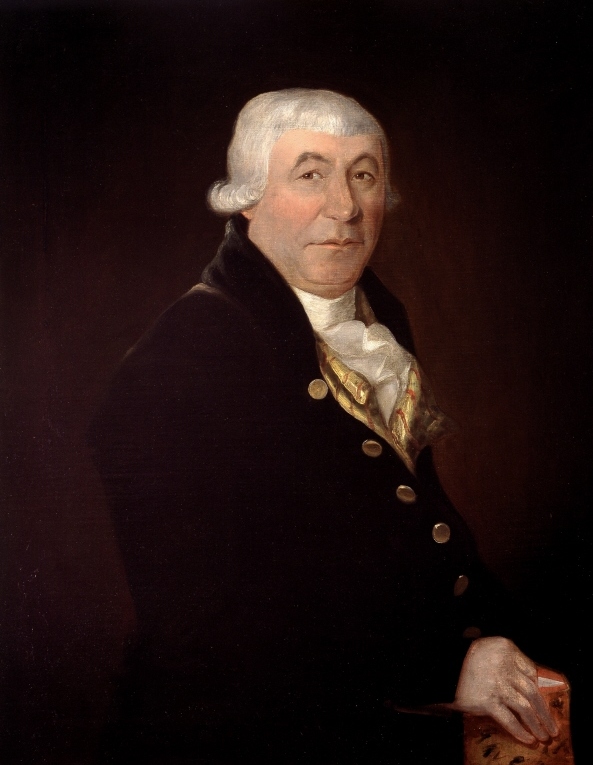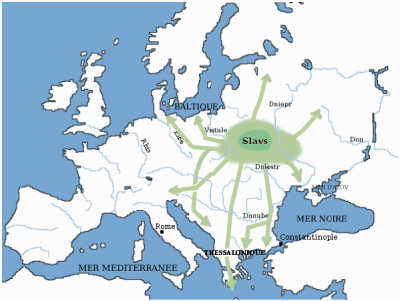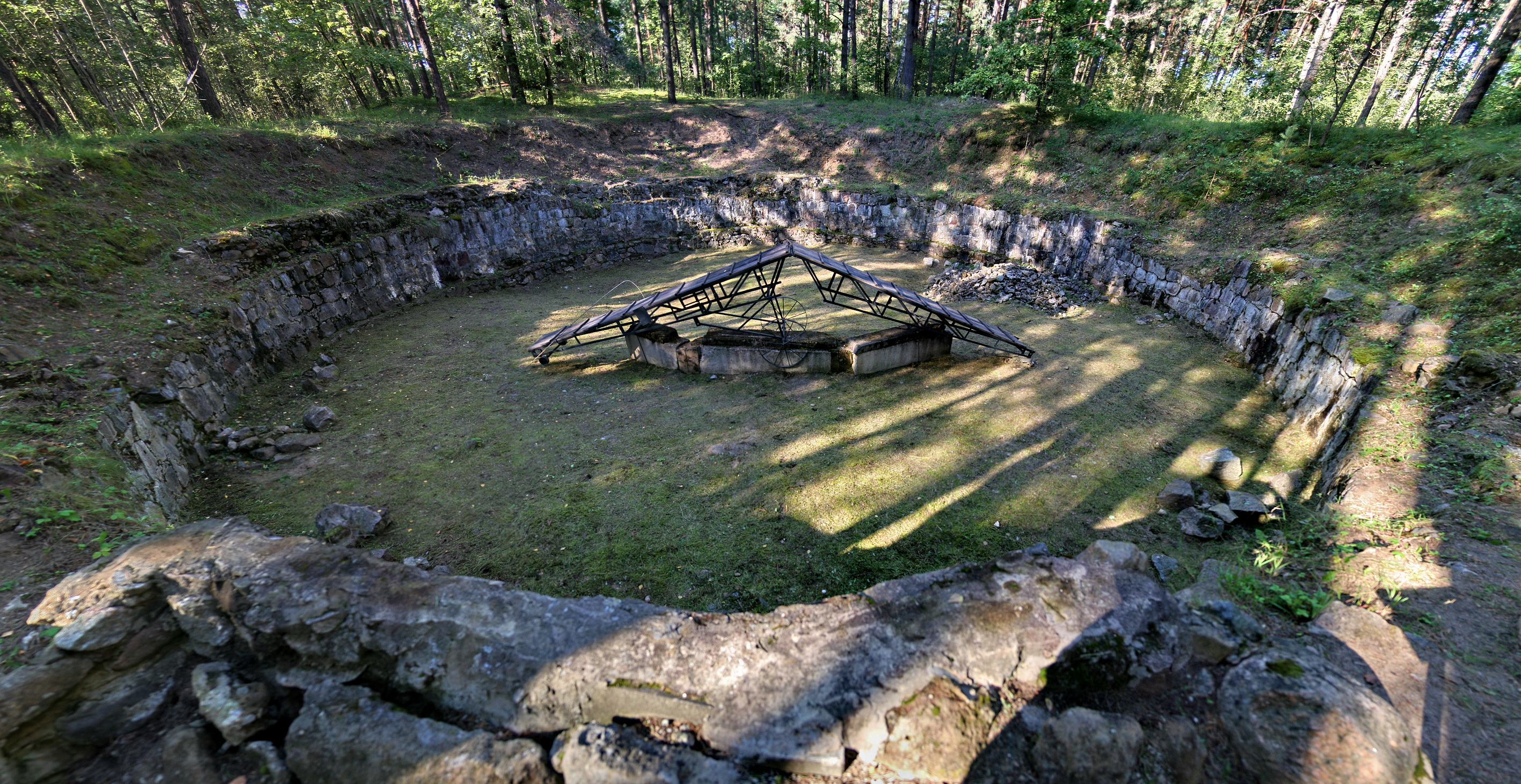|
Christian Gerlach
Hans Christian Gerlach is professor of Modern History at the University of Bern. Gerlach is also Associate Editor of the '' Journal of Genocide Research'' and author of multiple books dealing with the Hunger Plan, the Holocaust, and genocide. Writings His books include ''Krieg, Ernährung, Volkermord: Forschungen zur Deutschen Vernichtungspolitik im Zweiten Weltkrieg'' (1998); ''Kalkulierte Morde: die Deutsche Wirtschafts- und Vernichtungspolitik in Weissrussland 1941 bis 1944'' (1999); ''Das letzte Kapitel'' (co-authored with and Götz Aly in 2002); and ''Sur la conférence de Wannsee'' (2002). Work and views Gerlach's article "Extremely Violent Societies: An Alternative to the Concept of Genocide" has been the subject of great debate among scholars of genocide and violence. In the article, Gerlach challenges the model utilized in trying to understand genocide. Gerlach has previously stirred intense debate among Holocaust historians with his thesis surrounding 12 December 1 ... [...More Info...] [...Related Items...] OR: [Wikipedia] [Google] [Baidu] |
University Of Bern
The University of Bern (, , ) is a public university, public research university in the Switzerland, Swiss capital of Bern. It was founded in 1834. It is regulated and financed by the canton of Bern. It is a comprehensive university offering a broad choice of courses and programs in eight faculty (division), faculties and some 150 institutes. With around 19,000 students, the University of Bern is the third largest university in Switzerland. Organization The University of Bern operates at three levels: university, faculties and institutes. Other organizational units include interfaculty and general university units. The university's highest governing body is the Senate, which is responsible for issuing statutes, rules and regulations. Directly answerable to the Senate is the University Board of Directors, the governing body for university management and coordination. The board comprises the rector, the vice-rectors and the administrative director. The structures and functions of ... [...More Info...] [...Related Items...] OR: [Wikipedia] [Google] [Baidu] |
McGill University
McGill University (French: Université McGill) is an English-language public research university in Montreal, Quebec, Canada. Founded in 1821 by royal charter,Frost, Stanley Brice. ''McGill University, Vol. I. For the Advancement of Learning, 1801–1895.'' McGill-Queen's University Press, 1980. the university bears the name of James McGill, a Scottish merchant, whose bequest in 1813 established the University of McGill College. In 1885, the name of the university was officially changed to McGill University. Its main campus is on the slope of Mount Royal in downtown Montreal in the borough of Ville-Marie, with a second campus situated in Sainte-Anne-de-Bellevue, west of the main campus on Montreal Island. The university is one of two members of the Association of American Universities located outside the United States, alongside the University of Toronto, and is the only Canadian member of the Global University Leaders Forum (GULF) within the World Economic Forum. The ... [...More Info...] [...Related Items...] OR: [Wikipedia] [Google] [Baidu] |
Living People
Purpose: Because living persons may suffer personal harm from inappropriate information, we should watch their articles carefully. By adding an article to this category, it marks them with a notice about sources whenever someone tries to edit them, to remind them of WP:BLP (biographies of living persons) policy that these articles must maintain a neutral point of view, maintain factual accuracy, and be properly sourced. Recent changes to these articles are listed on Special:RecentChangesLinked/Living people. Organization: This category should not be sub-categorized. Entries are generally sorted by family name In many societies, a surname, family name, or last name is the mostly hereditary portion of one's personal name that indicates one's family. It is typically combined with a given name to form the full name of a person, although several give .... Maintenance: Individuals of advanced age (over 90), for whom there has been no new documentation in the last ten ... [...More Info...] [...Related Items...] OR: [Wikipedia] [Google] [Baidu] |
Swiss Male Writers
Swiss most commonly refers to: * the adjectival form of Switzerland *Swiss people Swiss may also refer to: Places * Swiss, Missouri * Swiss, North Carolina * Swiss, West Virginia * Swiss, Wisconsin Other uses * Swiss Café, an old café located in Baghdad, Iraq *Swiss-system tournament, in various games and sports * Swiss International Air Lines **Swiss Global Air Lines, a subsidiary *Swissair, former national air line of Switzerland * .swiss alternative TLD for Switzerland See also *Swiss made, label for Swiss products *Swiss cheese (other) *Switzerland (other) *Languages of Switzerland, none of which are called "Swiss" *International Typographic Style, also known as Swiss Style, in graphic design *Schweizer (other), meaning Swiss in German *Schweitzer Schweitzer is a surname. Notable people with the surname include: * Albert Schweitzer (1875–1965), German theologian, musician, physician, and medical missionary, winner of the 1952 Nobel Peace Priz ... [...More Info...] [...Related Items...] OR: [Wikipedia] [Google] [Baidu] |
21st-century Swiss Historians
File:1st century collage.png, From top left, clockwise: Jesus is crucified by Roman authorities in Judaea (17th century painting). Four different men (Galba, Otho, Vitellius, and Vespasian) claim the title of Emperor within the span of a year; The Great Fire of Rome (18th-century painting) sees the destruction of two-thirds of the city, precipitating the empire's first persecution against Christians, who are blamed for the disaster; The Roman Colosseum is built and holds its inaugural games; Roman forces besiege Jerusalem during the First Jewish–Roman War (19th-century painting); The Trưng sisters lead a rebellion against the Chinese Han dynasty (anachronistic depiction); Boudica, queen of the British Iceni leads a rebellion against Rome (19th-century statue); Knife-shaped coin of the Xin dynasty., 335px rect 30 30 737 1077 Crucifixion of Jesus rect 767 30 1815 1077 Year of the Four Emperors rect 1846 30 3223 1077 Great Fire of Rome rect 30 1108 1106 2155 Boudican revolt ... [...More Info...] [...Related Items...] OR: [Wikipedia] [Google] [Baidu] |
Slavs
The Slavs or Slavic people are groups of people who speak Slavic languages. Slavs are geographically distributed throughout the northern parts of Eurasia; they predominantly inhabit Central Europe, Eastern Europe, Southeastern Europe, and Northern Asia, though there is a large Slavic minority scattered across the Baltic states and Central Asia, and a substantial Slavic diaspora in the Americas, Western Europe, and Northern Europe. Early Slavs lived during the Migration Period and the Early Middle Ages (approximately from the 5th to the 10th century AD), and came to control large parts of Central, Eastern, and Southeast Europe between the sixth and seventh centuries. Beginning in the 7th century, they were gradually Christianized. By the 12th century, they formed the core population of a number of medieval Christian states: East Slavs in the Kievan Rus', South Slavs in the Bulgarian Empire, the Principality of Serbia, the Duchy of Croatia and the Banate of B ... [...More Info...] [...Related Items...] OR: [Wikipedia] [Google] [Baidu] |
Anti-communism
Anti-communism is Political movement, political and Ideology, ideological opposition to communism, communist beliefs, groups, and individuals. Organized anti-communism developed after the 1917 October Revolution in Russia, and it reached global dimensions during the Cold War, when the United States and the Soviet Union engaged in an intense rivalry. Anti-communism has been an element of many movements and different political positions across the political spectrum, including anarchism, centrism, conservatism, fascism, liberalism, nationalism, social democracy, socialism, leftism, and libertarianism, as well as broad movements #Evasion of censorship, resisting communist governance. Anti-communism has also been expressed by #Religions, several religious groups, and in art and #Literature, literature. The first organization which was specifically dedicated to opposing communism was the Russian White movement, which fought in the Russian Civil War starting in 1918 against the recent ... [...More Info...] [...Related Items...] OR: [Wikipedia] [Google] [Baidu] |
Operation Barbarossa
Operation Barbarossa was the invasion of the Soviet Union by Nazi Germany and several of its European Axis allies starting on Sunday, 22 June 1941, during World War II. More than 3.8 million Axis troops invaded the western Soviet Union along a front, with the main goal of capturing territory up to a line between Arkhangelsk and Astrakhan, known as the A-A line. The attack became the largest and costliest military offensive in history, with around 10 million combatants taking part in the opening phase and over 8 million casualties by the end of the operation on 5 December 1941. It marked a major escalation of World War II, opened the Eastern Front—the largest and deadliest land war in history—and brought the Soviet Union into the Allied powers. The operation, code-named after the Holy Roman Emperor Frederick Barbarossa ("red beard"), put into action Nazi Germany's ideological goals of eradicating communism and conquering the western Soviet Union to repopulate it w ... [...More Info...] [...Related Items...] OR: [Wikipedia] [Google] [Baidu] |
Einsatzgruppe B
(, ; also 'task forces') were (SS) paramilitary death squads of Nazi Germany that were responsible for mass murder, primarily by shooting, during World War II (1939–1945) in German-occupied Europe. The had an integral role in the implementation of the so-called "Final Solution to the Jewish question" () in territories conquered by Nazi Germany, and were involved in the murder of much of the intelligentsia and cultural elite of Poland, including members of the Catholic priesthood. Almost all of the people they murdered were civilians, beginning with the intelligentsia and swiftly progressing to Soviet political commissars, Jews, and Romani people, as well as actual or alleged partisans throughout Eastern Europe. Under the direction of Heinrich Himmler and the supervision of SS- Reinhard Heydrich, the operated in territories occupied by the ''Wehrmacht'' (German armed forces) following the invasion of Poland in September 1939 and the invasion of the Soviet Union in ... [...More Info...] [...Related Items...] OR: [Wikipedia] [Google] [Baidu] |
Army Group Centre
Army Group Centre () was the name of two distinct strategic German Army Groups that fought on the Eastern Front in World War II. The first Army Group Centre was created during the planning of Operation Barbarossa, Germany's invasion of the Soviet Union, as one of the three German Army formations assigned to the invasion. After Army Group North was trapped in the Courland Pocket in mid-1944, it was renamed to Army Group Courland and the first Army Group Centre was renamed "Army Group North". The second iteration of Army Group Centre was formed by the redesignation of Army Group A as the replacement for the first Army Group Centre. Formation and Command The army group was officially created by Adolf Hitler when he issued Führer Directive 21 on 18 December 1940, ordering German forces to prepare for an attack on Soviet Russia in 1941. The first commanding officer of Army Group Centre was Field Marshal Fedor von Bock, who would lead it until he was relieved on 18 December 19 ... [...More Info...] [...Related Items...] OR: [Wikipedia] [Google] [Baidu] |
Institut Für Zeitgeschichte
The Institute of Contemporary History (''Institut für Zeitgeschichte'') in Munich was conceived in 1947 under the name ''Deutsches Institut für Geschichte der nationalsozialistischen Zeit'' ("German Institute of the History of the National Socialist Era"). Founded by the German government and the State of Bavaria at the suggestion of the Allied Forces, it was established in 1949 and renamed in 1952. Its purpose is the analysis of contemporary German history. History The institute is funded by the German government, and the German states of Bavaria, Baden-Württemberg, Brandenburg, Hesse, Lower Saxony, North Rhine-Westphalia and Saxony. The first director of the institute was Hans Rothfels, the second director was Martin Broszat. Representatives of the supporting states are also members of the institute's board. Since 1953, the institute has been publishing the journal ' (''Contemporary History Quarterly''), which is regarded as one of the most important publications of Germa ... [...More Info...] [...Related Items...] OR: [Wikipedia] [Google] [Baidu] |
Johannes Hürter
Johannes Hürter (born 17 December 1963) is a German historian. He is the director of the Munich research division of the Institute of Contemporary History. His research interests focus mainly on the history of Nazi Germany and on post-war anti-terrorism policy. Career Hürter was born in Hamburg. He studied history, German and musicology at the Heidelberg University and the University of Mainz. In 1992 he received his doctorate from the University of Mainz, his thesis was on Wilhelm Groener, the Reich Minister of Defence of the Weimar Republic. In 2005, Hürter completed his habilitation with his book ''Hitler's Heerfuhrer'', which was created as part of the Institute of Contemporary History project, The Wehrmacht during the Nazi Dictatorship. The book was rated as a groundbreaking work in historical review journals such as ''H-Soz-u-Kult'' and ''Sehepunkte''. His work also received positive reviews in the national press such as the ''Frankfurter Allgemeine Zeitung'', ''Südde ... [...More Info...] [...Related Items...] OR: [Wikipedia] [Google] [Baidu] |





